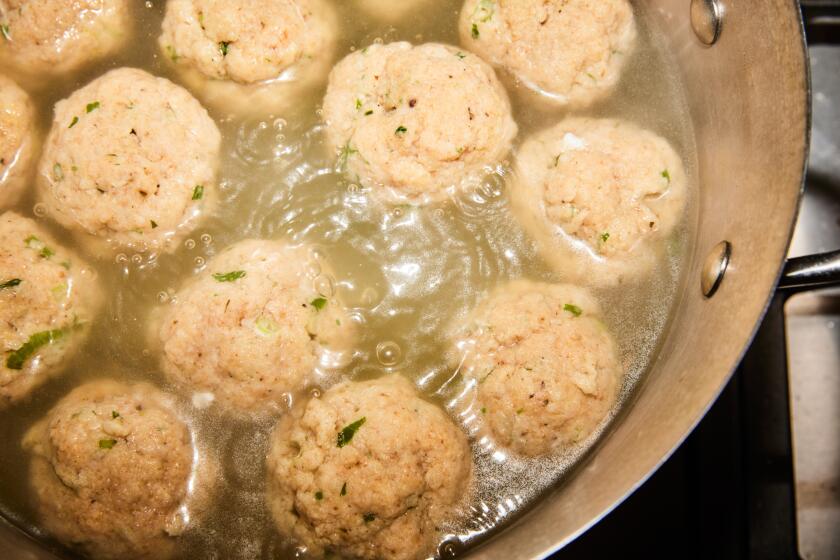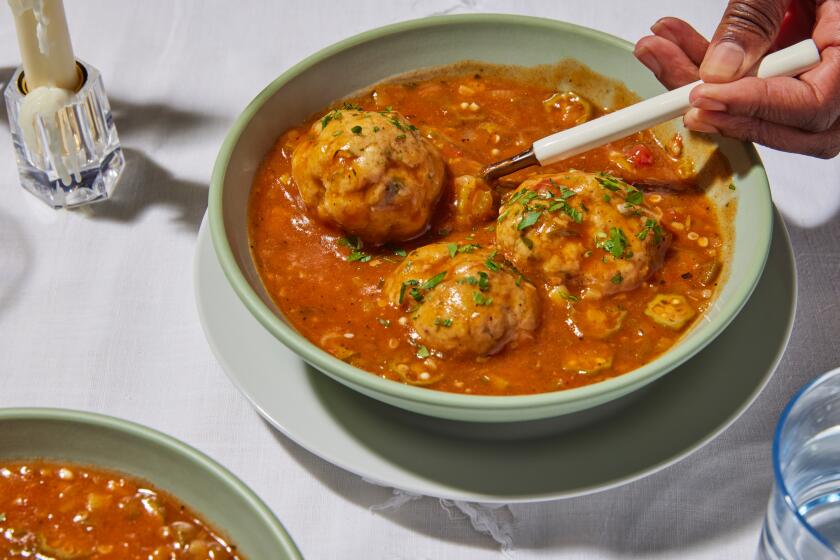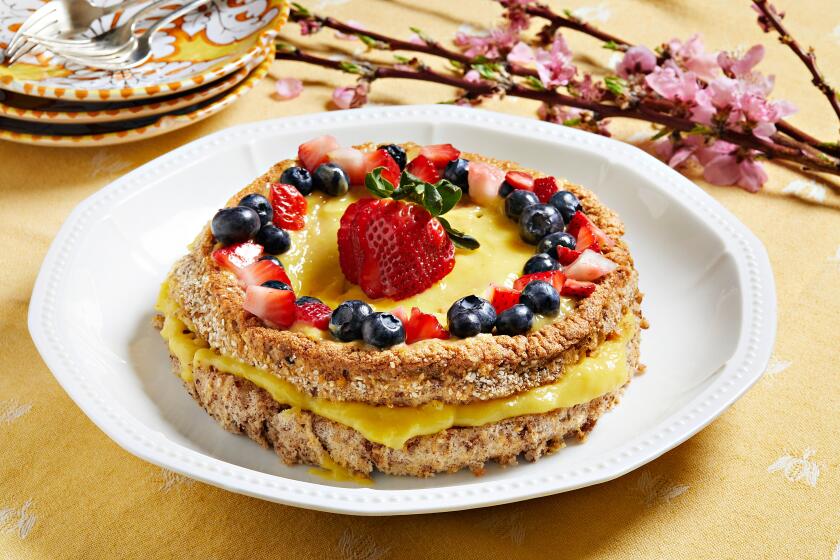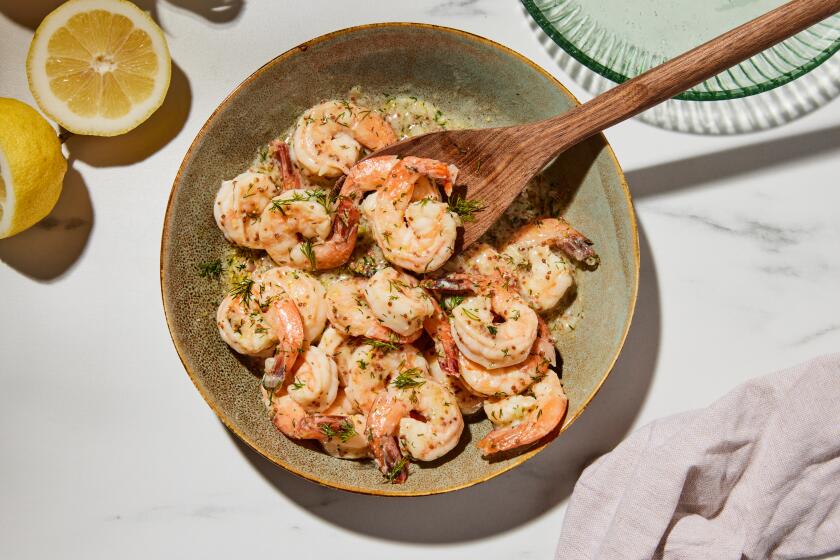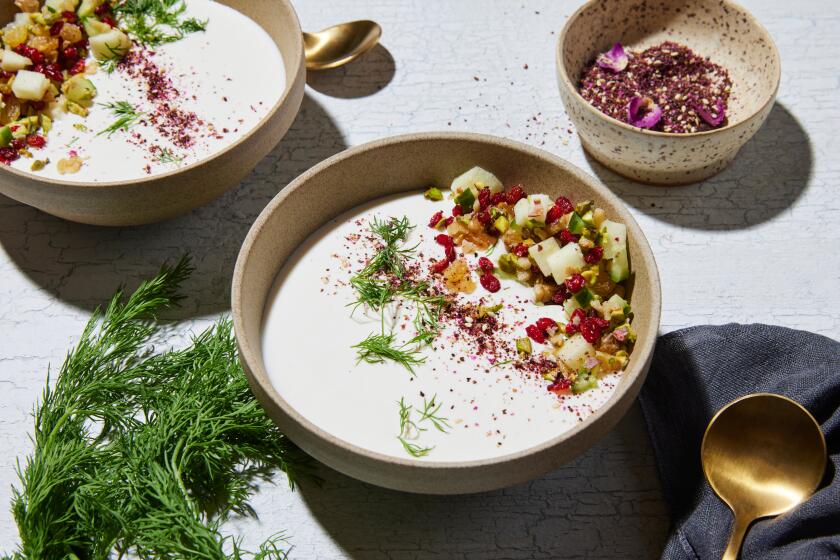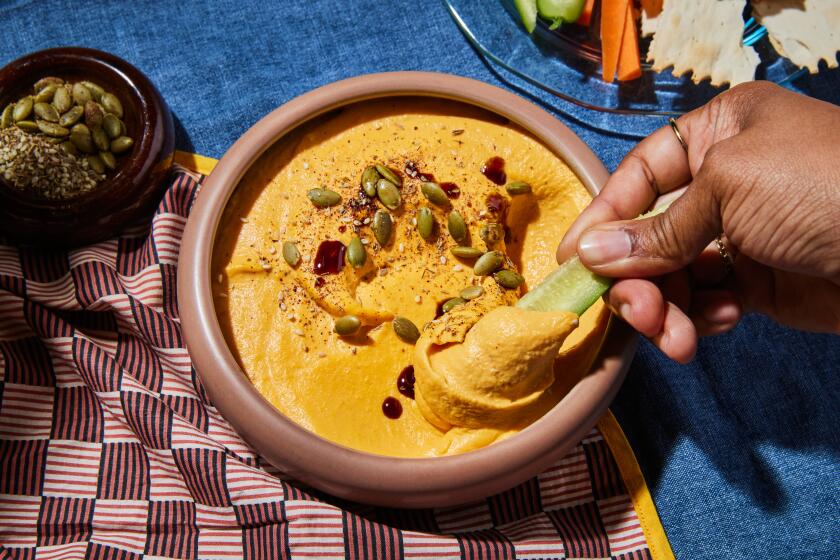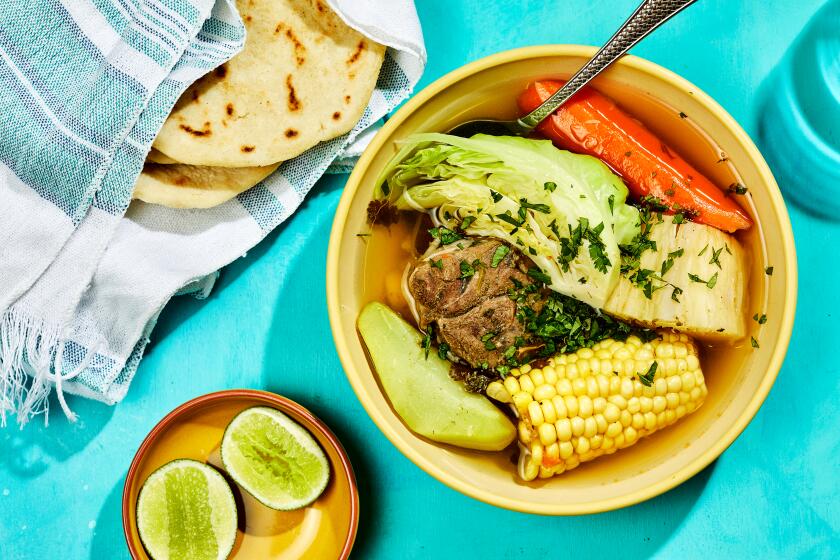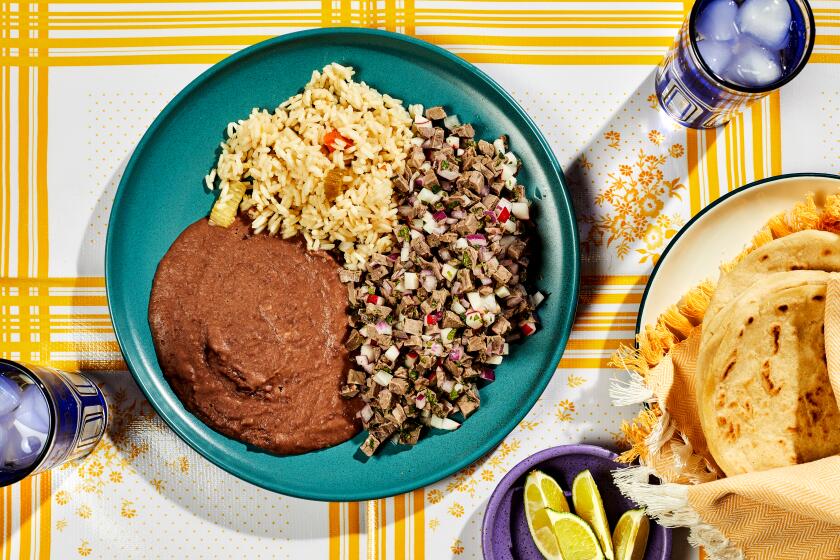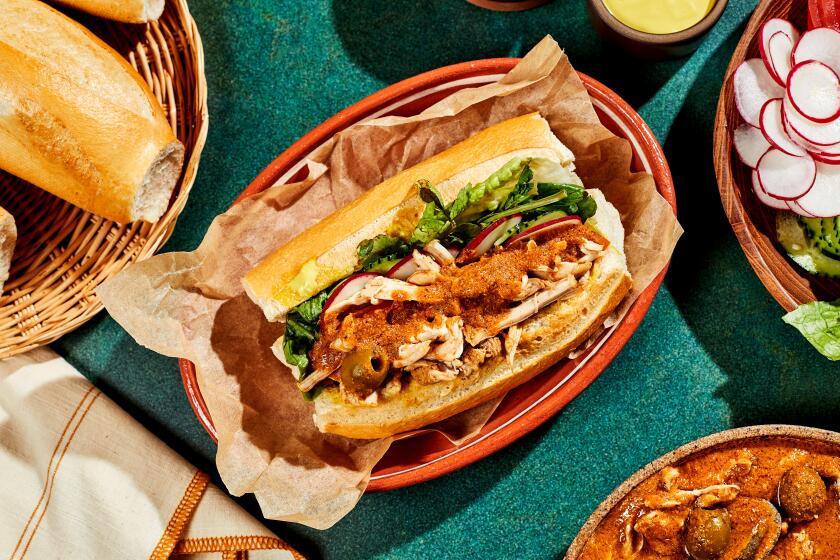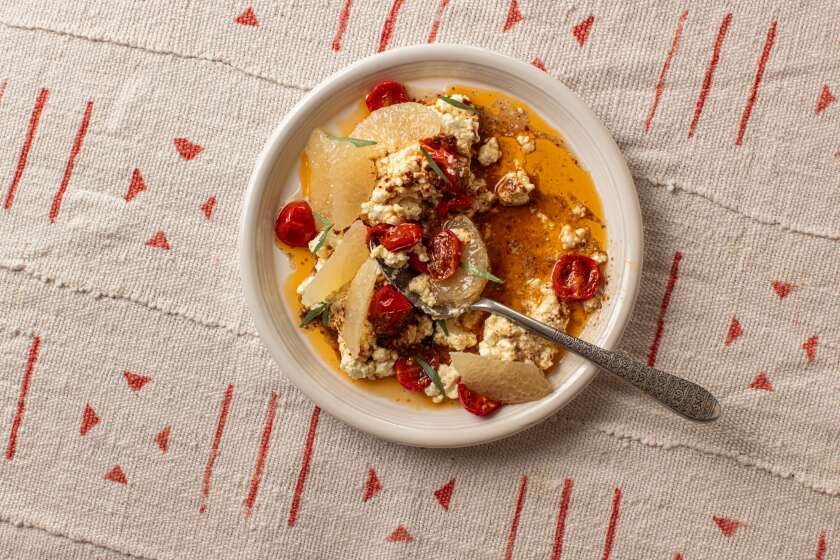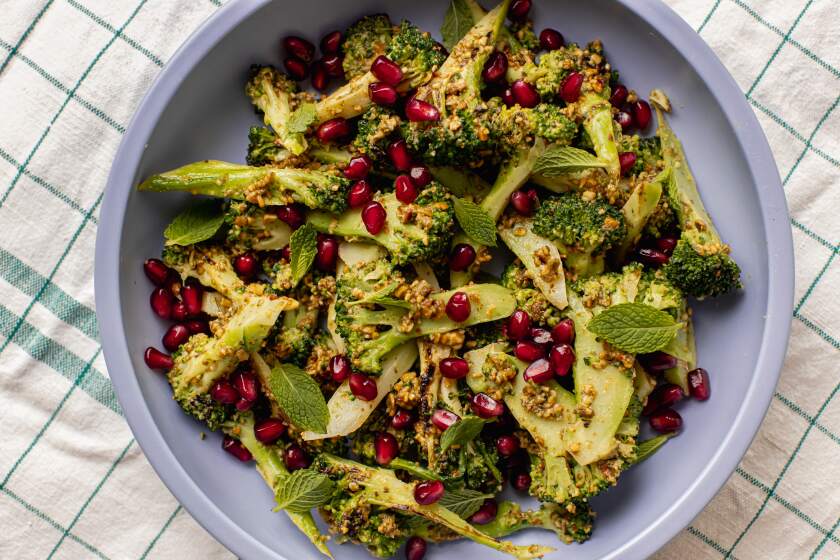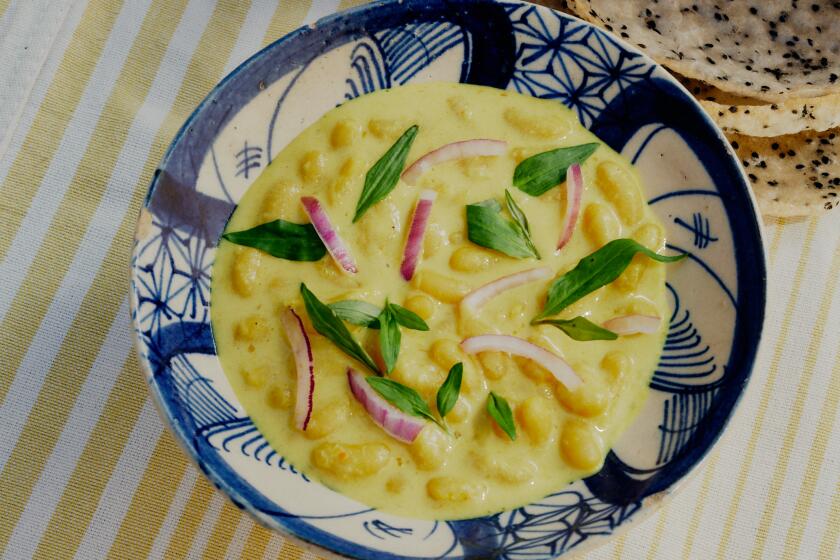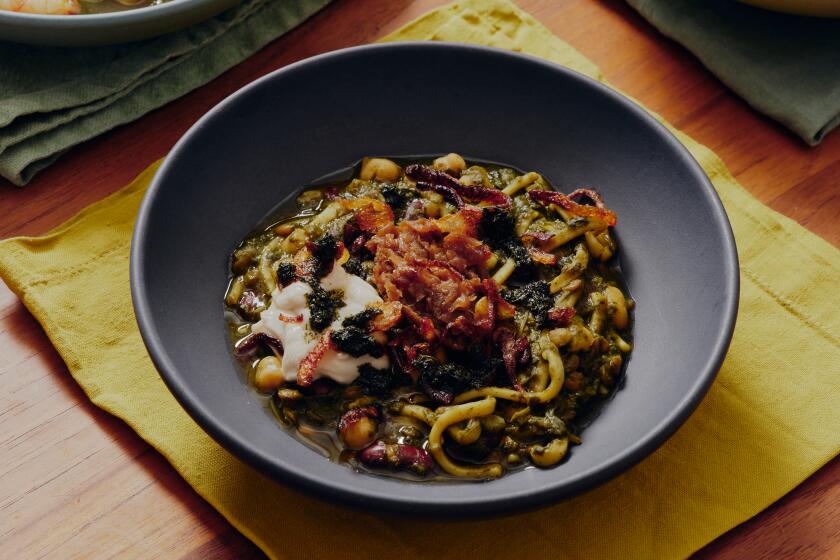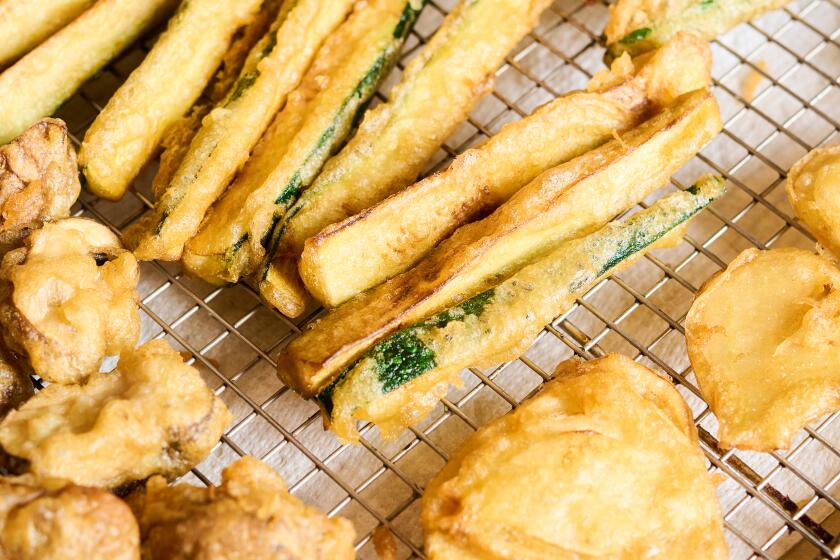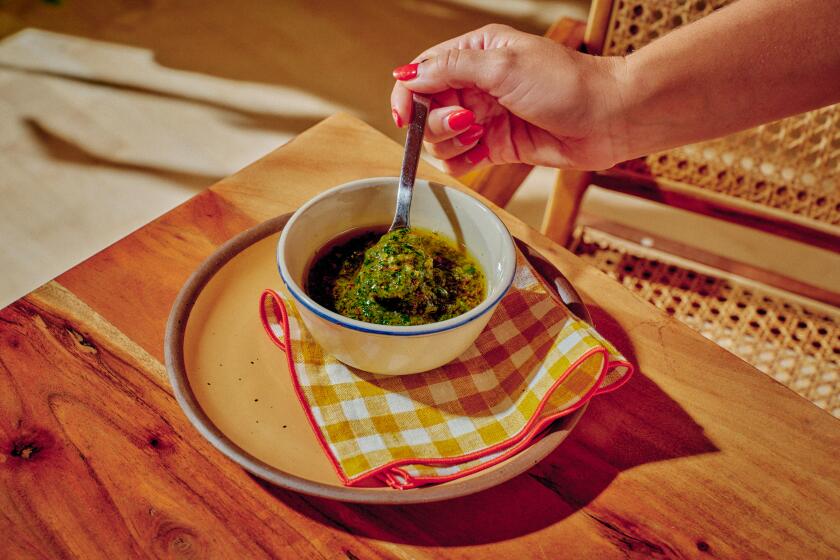Ratatouille purée
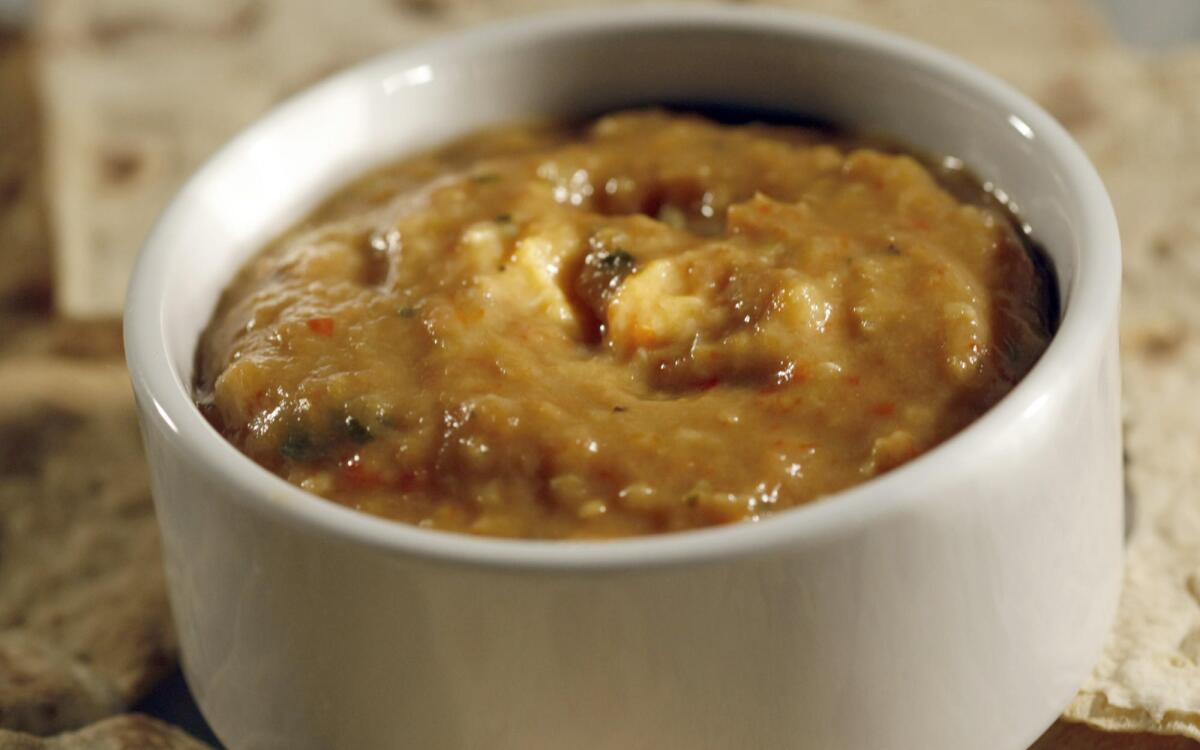
A carefully made ratatouille is one of the classic dishes of summer, a deeply delicious expression of what can be done with the best vegetables from the seasonal garden. It is bright and acidic, sweet and herbaceous, rich with olive oil and vibrant in color.
But there’s more to ratatouille than just one dish — no matter how great it might be. With a little imagination, a pot of ratatouille can be a door opening onto a whole world of dishes.
Make a big batch of ratatouille and you’ll find there are so many things that can be done with it. From a purely pragmatic standpoint, it really isn’t that much more work to make a lot than a little, and it will cook in about the same amount of time. Plus, it’s fascinating to see how the changes in texture affect the flavor.
The basic ratatouille is chunky and stew-like, and the vegetables retain their integrity and flavor.
Coarsely chop the ratatouille and fold in capers and it makes a terrific pasta sauce. Serve it with bucatini and finish it with grated cheese and toasted bread crumbs. This way the texture is just smooth enough to work as a chunky pasta sauce, and there’s enough body to complement the chewy texture of the noodle.
Pulse it in a food processor to a chunky purée, add mustard, vinegar and a dash of Tabasco, and you’ve got a spread that will light up any summer sandwich. Or simply serve it with pita chips or toasted lavash. As the texture becomes creamier, you’ll notice the flavors become interwoven.
Finally, purée it completely smooth in a blender with cold chicken stock and a little anise-flavored Pernod and you’ve got a velvety base for a refreshing summer soup that needs only a simple garnish to be elegant enough for any dinner party.
From one great dish, so many delicious possibilities.
Can’t decide what you want to do? Stick the leftover ratatouille in the freezer until you make up your mind. Place the stew in the smallest airtight container that you can fit it in and freeze it for up to a month. Just don’t forget to leave a little bit of space between the surface of the ratatouille and the lid, as the water in the ratatouille will expand once frozen.
Ratatouille can also be canned, but this must be done carefully. Because it is a low-acid food, the only safe method to eliminate the risk of botulism is to use a pressure canner rather than the basic water bath. Also, the pressure-canning process results in further cooking and may contribute to a slightly mushy texture.
Combine all of the ingredients in a food processor and pulse the blade until you have a slightly coarse, rustic purée and the oil is emulsified. Season the mixture with salt if necessary.
Get our Cooking newsletter.
Your roundup of inspiring recipes and kitchen tricks.
You may occasionally receive promotional content from the Los Angeles Times.

